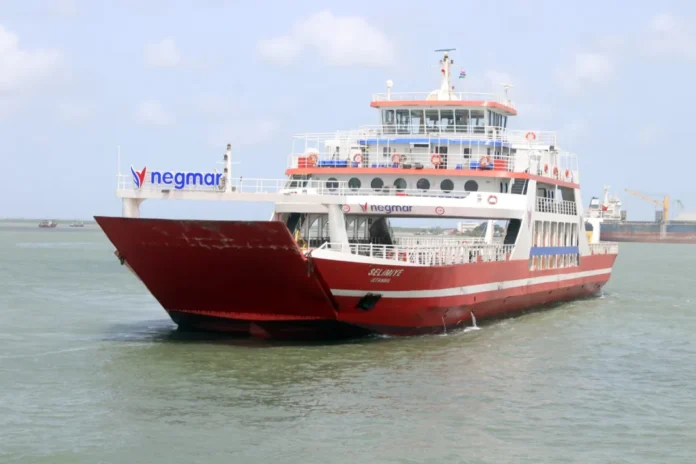Written by: Seringe ST Touray
A new roll-on, roll-off ferry named Selimiye has been introduced by NEGMAR Investment Corporation, a Turkish company investing in river transport in The Gambia. The vessel is intended to add capacity on the Banjul–Barra corridor and operate alongside the state service.
At 88 metres long and 17 metres wide, Selimiye is fitted with four engines and double-ended ramps that allow for quicker loading and departure. The crossing time between Banjul and Barra is expected to be around 25 minutes.

NEGMAR says the ferry can carry about 1,000 passengers, including a 100-seat air-conditioned section, and up to 80 vehicles, with space for 30 trucks when configured for heavy traffic. By Gambian standards, this is a major step up in scale and efficiency.
Trial operations are scheduled to begin before the end of the year, once the new landing sites are complete. NEGMAR has been allocated sites to build terminals on both banks — one near the old Radio Syd site in Banjul and another behind the Ferry Services complex in Barra. The company has described the total investment as exceeding 30 million dollars.
For commuters, more capacity and faster turnaround could ease years of frustration. Delays on this route are common, and when only one public ferry is in service, queues quickly build and travellers can wait for hours on both banks.
In 2025 the public fleet has relied mainly on Kunta Kinteh and Kanilai. Both have experienced extended periods out of rotation over the past 18 months. Each time a ferry is withdrawn for maintenance, the backlog spreads to traders, students and patients who depend on a predictable crossing.
The arrival of Selimiye offers a practical opportunity to relieve that pressure. A larger deck, faster loading and steady rotations can cut waiting time, while new terminals with clear lanes and transparent ticketing could improve order at the ramps.
NEGMAR has stressed that its service will complement, not replace, the public ferries. If both sides keep vessels available, the route will finally have the redundancy it has long lacked, ensuring that a single breakdown does not paralyse traffic.
The milestones to watch now are straightforward: completion of the new terminals on both banks, publication of a timetable and fares, and successful trial sailings. If those steps are achieved, the Banjul–Barra crossing may at last shift from years of frustration to a more reliable future.




